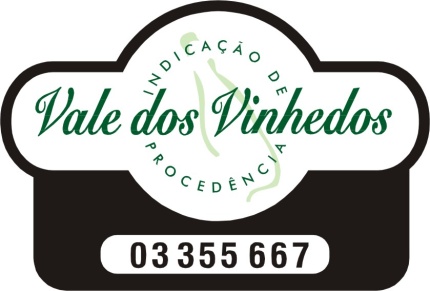Chapter 2 – Serra Gaúcha and its history
As we already know some aspects of this charming and magical place for its natural beauty, let’s see what tells us the story:
The Region
Located in the northeast of Rio Grande do Sul, Serra Gaúcha is the star of the Brazilian wine industry, highlighting the volume and quality of its wines. For any oenophile who goes to Rio Grande do Sul, is worth visiting Serra Gaúcha, especially Bento Gonçalves.
Geo-climatic characteristics
The region of Serra Gaúcha is located at latitude near the ideal geo-climatic conditions for the development of best vineyards, but the excessive rain is usually harmful just at the time preceding the harvest, crucial to the maturation period of the grapes.
When rainfall is low, there are great vintages, as in the years 1999, 2002, 2004, 2005 and 2006.
Since 2007, with global warming, the climate of the Serra Gaúcha has been changing with hot and dry summers with great results for wine, but terrible for agriculture.
Since 2005 the level of quality of red wines has been continuously rising, thanks to this change and also the use of new technologies by vineyards from 2000.
Information on Serra Gaúcha Region
Latitude: 29º South
Altitude: 400 to 700 m above the see level
Topography: Mountain
Climate: humid temperate
Rains: Annual average 1.800 mm / year
Temperatures: Average between 16º and 18ºC
Soils: Sandy clay acid
Vale dos Vinhedos
Vale dos Vinhedos is located in Serra Gaúcha, near the city of Bento Gonçalves, characterized by the presence of descendants of Italian immigrants, pioneers of Brazilian winemaking. In this region, the average temperatures create ideal conditions for fine winemaking focused on quality.
Technological developments of the last decades applied to the wine process enabled the conquest of most demanding markets and the recognition of the Vale dos Vinhedos wines. Thus, the evolution of winemaking in the region has become the most important goal of the producers of the Valley.
Vale dos Vinhedos is the first winery region of Brazil to obtain indication of origin of their products by displaying the Seal Control and for sparkling wines produced in the associated wineries. Created in 1995 from the union of six wineries, the Association of Producers of Fine Wine Vale dos Vinhedos (APROVALE), have emerged with the purpose of achieving a Denomination of Origin. However, it was necessary to follow the steps of the experiment, passing first by an indication of origin.

Fonte da Imagem: http://2.bp.blogspot.com/-WVazt6OafLs/TdMetv3_HhI/AAAAAAAAALI/PKf1iMdpGPI/s1600/Selo_da_I.P.V.V.jpg
The application of geographic reconnaissance sent to National Institute of Industrial Property (INPI) in 1998 was achieved only in 2001, this period was necessary to enter into operating agreements to assist in the development of activities that served as prerequisites for the achievement of the Vale dos Vinhedos Indication of Origin (IPVV). The work resulted in historical survey, geographic map and study the potential of the wine industry in the region.
Currently underway is the implementation of a DOC in the region.

Fonte da Imagem: http://www.cnpuv.embrapa.br/tecnologias/ig/valedosvinhedos_selo.png
History
Vale dos Vinhedos was the first region handed over to Italian immigrants from 1875. Initially they developed there subsistence farming and production of consumer items to Rio Grande do Sul. Due to the tradition of the origin region of immigrant families, Veneto, soon they started planting grapes for wine production for local consumption.

Fonte da Imagem: http://www.infoescola.com/wp-content/uploads/2010/06/colonizacao-italiana-RS.jpg
Until the 80s of XX century, the grape growers of the Vale dos Vinhedos sold their production to large wineries in the region. A small amount of wine they produced was destined for family consumption.
This situation changed when the market wine went into decline and, consequently, the price of grapes devalued. The growers then began to use their production to make their wine and commercialize it directly, thus having possibility of increased profits.

Fonte da Imagem: http://www.oriundi.net/imgs/trabalho.jpg
To achieve this goal and meet the legal requirements of Geographical Indication six wineries have joined, creating, in 1995, the Association of Producers of Fine Wine Vale dos Vinhedos (Aprovale).
Currently, Aprovale has 24 wineries and 19 associated producers non linked to wine production, including hotels, hostels, restaurants, manufacturers of handmade products, dairies, among others. The wineries of the Vale dos Vinhedos produced in 2004 9.3 million liters of fine wines and processed 14.3 million pounds of wine grapes.

Fonte da Imagem: http://wp.clicrbs.com.br/enoblog/files/2010/06/novologoaprovale.jpg
Fonte: http://www.academiadovinho.com.br/_regiao_mostra.php?reg_num=SERRAGAUCHA
The history, geographical position and climate are keys for us to understand the socio-cultural aspects that led Serra Gaúcha to be a major center for wine production and planting of wine grapes in Brazil. As well as the knowledge about the founding of several organizations that have contributed to elevate the wines produced in Serra Gaúcha.
In the next issue, we will know the queens responsible for producing the finest Brazilian wines, their origin, variety and acclimatization on Brazilian soil.
See you there!





